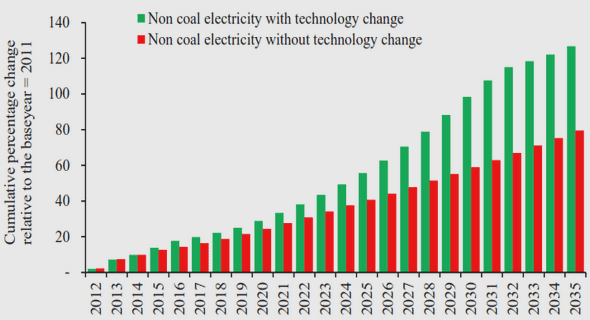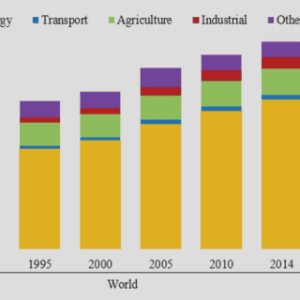(Downloads - 0)
For more info about our services contact : help@bestpfe.com
Table of contents
Chapter I. Introduction on the Direct Ethanol Fuel Cell
I.1. Context
I.2. Brief history of fuel cells
I.3. Overview of a fuel cell
I.3.1. Overall operation
I.3.2. Fuel cell components
I.4. Electrochemical reactions: DEFC
I.4.1. Anode side
I.4.2. Cathode side
I.4.3. Global reaction
I.5. Energy efficiency
I.5.1. Thermodynamic efficiency
I.5.2. Potential efficiency
I.5.3. Faraday yield
I.5.4. Overall energy
I.6. Ethanol oxidation reaction
I.6.1. Problematic
I.6.2. Mechanism of the EOR in acidic medium on platinum
I.6.3. Ethanol adsorption modes
I.6.4. Ethanol dehydrogenation
I.6.5. C-C bond splitting
I.6.6. CO-stripping
I.6.7. Acetaldehyde oxidation reaction
I.6.8. Acetic acid or ethyl acetate
I.6.9. Pt-M alloys
I.6.9.1. Pt-SnO2/C
I.6.9.2. Pt-Rh/C
I.6.9.3. Pt-Rh-SnO2/C
I.7. Overview of the investigations carried out in this thesis
Chapter II. Experimental section
II.1. Synthesis of the carbon-supported electrocatalysts by the polyol method
II.2. Physical characterisations
II.2.1. ICP-AES
II.2.2. Thermogravimetric analysis
II.2.3. Transmission Electron Miscroscopy
II.2.4. X-Ray Diffraction (XRD)
II.3. Electrochemical characterization
II.3.1. Three electrode assembly
II.3.2. Cyclic voltammetry
II.3.3. Chronoamperometry
II.3.4. Rotating Disc Electrode
II.3.5. Evaluation of the electrochemical active surface area
II.3.6. Normalization of the current
II.4. Coupled physical and electrochemical techniques
II.4.1. In situ Fourier Transform InfraRed spectroscopy
II.4.2. Differential Electrochemical Mass Spectrometry (DEMS)
II.4.2.1. Basics of operation
II.4.2.2. MS calibration
II.5. Conclusions
Chapter III. Ethanol Oxidation Reaction (EOR) investigation on Pt/C, Rh/C, and Pt-based bi- and tri-metallic electrocatalysts: a DEMS and FTIR study
III.1. Influence of the Pt/C electrode structure on the EOR
III.1.1. Introduction
III.1.2. Physical characterization
III.1.3. Effect of the mass-transport
III.1.4. Influence of the electrocatalyst thickness
III.1.4.1. Thickness determination
III.1.4.2. Effect of the thickness on the EOR
III.1.4.2.1. DEMS
III.1.4.2.2. RDE
III.1.5. Effect of the scan rate
III.1.5.1. CO-stripping CVs
III.1.5.2. EOR CVs
III.1.6. Discussions
III.1.7. Conclusions
III.2. Effect of Rh- and Sn- addition on the Pt-based electrocatalyst on the EOR
III.2.1. Physical characterization
III.2.2. CV in base electrolyte
III.2.3. CO stripping CV
III.2.3.1. On-line DEMS
III.2.3.2. In situ FTIR
III.2.4. Comparison of the in situ FTIR and on-line DEMS measurements
III.2.5. Ethanol electrooxidation
III.2.5.1. EOR on Pt/C studied by in situ FTIR
III.2.5.2. Comparison with on-line DEMS measurements
III.2.5.3. In situ FTIR – EOR on Pt- and Rh-based electrocatalysts
III.2.5.4. Comparison in situ FTIR and on-line DEMS measurements
III.2.6. Conclusions on the addition of transition metals to platinum
Chapter IV. Influence of H- and OH-adsorbates on the ethanol oxidation reaction – A DEMS Study
IV.1. Influence of adsorbates on the oxidation of organic molecules
IV.2. Hydrogen and hydroxide adsorption procedure
IV.3. Potentiodynamic ethanol oxidation reaction
IV.3.1. On Pt/C
IV.3.2. On Rh/C
IV.3.3. On Pt based bi- and tri-metallic electrocatalysts
IV.4. EOR comparative study between the electrocatalysts
IV.5. CO2 current efficiency
IV.6. Zoom on the CA at Ead = 0.05 V vs. RHE
IV.6.1. On Pt/C and Rh/C
IV.6.2. On Pt-based multi-metallic electrocatalysts
IV.7. Potentiodynamic acetaldehyde oxidation reaction
IV.7.1. On Pt/C
IV.7.2. On Rh/C
IV.7.3. On Pt-based electrocatalysts
IV.8. Acetaldehyde potentiostatic adsorption at Ead = 0.05 V vs. RHE
IV.9. Conclusions
Chapter V. Mass spectrometric investigation of ethanol and acetaldehyde adsorbates electrooxidation on Pt- and Rh-based electrocatalysts
V.1. Ethanol and acetaldehyde adsorbates electrooxidation
V.2. Ethanol and acetaldehyde adsorbates formation
V.3. On Pt/C
V.3.1. Ethanol adsorbates stripping
V.3.2. Acetaldehyde adsorbates stripping
V.3.3. Discussion
V.4. On Rh/C
V.5. On Pt-based electrocatalysts
V.5.1. Ethanol adsorbates stripping
V.5.2. Acetaldehyde adsorbates stripping
V.6. Conclusions
Chapter VI. Influence of the temperature for the ethanol oxidation reaction (EOR) on Pt/C, Pt-Rh/C and Pt-Rh-SnO2/C
VI.1. Influence of the temperature on the EOR
VI.2. Physical characterization
VI.3. CVs in supporting electrolyte
VI.4. COad monolayer electrooxidation
VI.5. Potentiodynamic EOR
VI.6. Tafel plot
VI.7. Apparent activation energy
VI.8. Conclusions
Discussion, conclusions and prospects
Appendix.
A1. CV in supporting electrolyte
A2. CO stripping
A3. Potentiodynamic ethanol oxidation
A4. Potentiostatic ethanol oxidation
A5. Conclusions
Literature references



